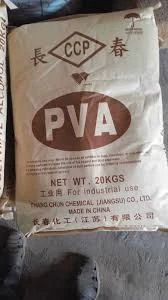Cellulose in Paints Enhancing Performance and Sustainability
Cellulose, a natural polymer derived from plant cell walls, has gained significant attention in the paint industry due to its versatile properties and environmental benefits. As the world increasingly shifts towards sustainable practices, the incorporation of cellulose into paints presents a compelling solution that not only improves the performance of coatings but also aligns with eco-friendly initiatives.
Cellulose in Paints Enhancing Performance and Sustainability
In addition to improving viscosity, cellulose contributes to the overall durability of paints. Paints that contain cellulose exhibit enhanced adhesion, which means they are less likely to peel or chip over time. This durability is particularly important in exterior applications, where environmental factors like UV radiation, moisture, and temperature fluctuations can significantly impact the lifespan of coatings. Additionally, cellulose's ability to absorb and release moisture helps mitigate issues related to humidity, contributing to the longevity of the painted surface.
cellulose for paints

Another noteworthy aspect of cellulose is its role in enhancing the finish and aesthetic quality of paints. Cellulose-based additives can improve the gloss and texture of coatings, providing a smooth and attractive surface. This is particularly desirable in decorative applications where appearance plays a crucial role. Furthermore, cellulose is compatible with a wide range of pigments, enabling formulators to achieve vibrant colors without compromising the paint's performance.
From an environmental standpoint, the use of cellulose in paints underscores a commitment to sustainability. As a renewable resource, cellulose is derived from abundant materials like wood pulp and agricultural residues. By incorporating cellulose into paint formulations, manufacturers can reduce their reliance on petroleum-based additives, thereby lowering the overall carbon footprint of their products. Additionally, cellulose is biodegradable, which means that paints containing cellulose are less likely to contribute to environmental pollution once they are disposed of.
The demand for eco-friendly and non-toxic products is driving the innovation of cellulose-based paints. Many consumers are now seeking low-VOC (volatile organic compounds) options that minimize indoor air pollution, and cellulose aligns perfectly with this trend. Paints formulated with cellulose typically generate fewer harmful emissions, making them safer for both consumers and the environment. This shift towards safer alternatives is particularly important in residential settings where families, including children and pets, are present.
In conclusion, cellulose stands out as an invaluable ingredient in the paint industry, offering a harmonious blend of performance, durability, and sustainability. Its ability to enhance viscosity, improve adhesion, and contribute to the aesthetic quality of coatings makes it a preferred choice among formulators seeking high-quality solutions. As the push for greener products continues to grow, the incorporation of cellulose into paints not only reflects a commitment to environmental stewardship but also meets the evolving demands of consumers for safe and effective paint options. Embracing cellulose in paint formulations is a step towards a more sustainable future while elevating the quality and performance of coatings used in various applications.






